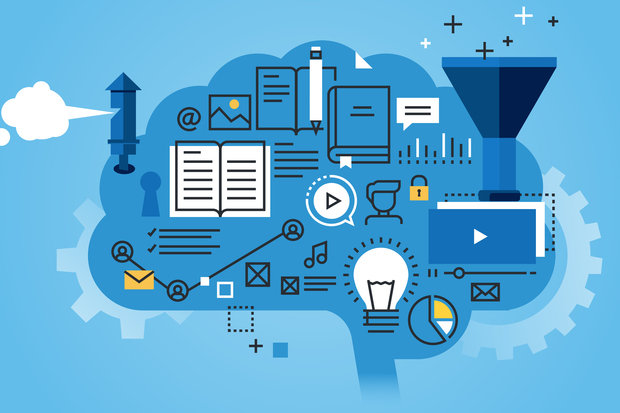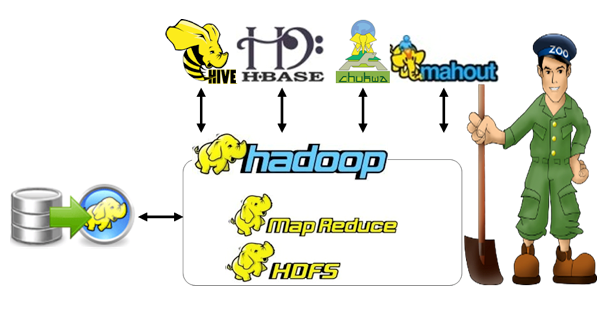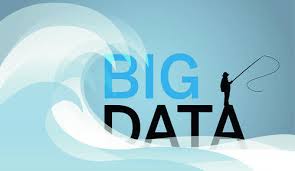Harnessing Big Data to Improve the Health and Wellness of Individuals
In 2007, the “Quantified Self” movement began, calling individuals to marry the statistical ability of technology with their daily life and create a log of how they spent their time, what they ate, when they slept, and a plethora of other information. Practitioners believed they could create an optimum life by analyzing the data they collected on themselves.
Now, it seems the people most frequently tracking portions of their lives are doing so in an effort to gain, lose, or sculpt the weight on their frame. The truly dedicated fitness fanatics among us tout exercise trackers, activity journals, and occasionally, wellness focused practices like meditation apps. The reminders provided by health apps help to reinforce good habits, as well as providing visual feedback on progress.
 In the not so distant future, though, we may all have an activity journal, and not just for ourselves. Doctors, personal trainers, and psychologists may peek over our shoulder and share in the data we’ve collected about ourselves, formulating more tailored and individually-informed treatment plans.
In the not so distant future, though, we may all have an activity journal, and not just for ourselves. Doctors, personal trainers, and psychologists may peek over our shoulder and share in the data we’ve collected about ourselves, formulating more tailored and individually-informed treatment plans.
Life tracking applications are becoming more sophisticated, and we’re in the middle of a data-driven trend that seeks to optimize our lives through a series of reminders, guided programs, and coached check-ins. Medical professionals are already reporting positive outcomes with the use of health technology, and the future looks bright (and drastically different) as more data is collected and put to use.
Where Does Health Data Come From?
The vast majority of health care centers now operate with electronic health records. For larger systems, these records may be interfaced between locations so that patients can see specialists without having to transfer medical records or provide the same history again. Since patient data is now being entered into electronic records every time they visit the doctor, the industry is slowly amassing a plethora of patient statistics.
The information obtained through medical visits is supplemented with health surveys, information entered into apps, wearable tech, and more recently, genome sequencing companies. All of this data is compiled in enterprise data warehouses, where analysts can look for trends and critically review human health across the nation. In some cases, databases are international, allowing for comparison between one region’s unique health problems and another’s.
With so much patient data passing through multiple hands and being held in several places, health privacy is an obvious concern. Local to the United States, patient privacy is regulated through HIPAA and HITECH. Both stand to protect patient anonymity, and the latter facilitated the widespread migrations to electronic health records. These policies allow data to be stored and used for analysis with little risk to patient identity.
What Can We Do With Collected Information?
Currently, the information is curated by health informatics professionals to establish trends in the data and draw relevant conclusions. This information is passed on to various governing and advisory bodies, as well as published for use in public health campaigns and research studies. As the body of information grows to be more complete, analyses can become more focused and offer insight to increasingly specific questions.
While it may seem a little over the top at first, collecting an overwhelming amount of information stands to benefit community health initiatives. When researching a demographic in order to develop an effective public health campaign, agencies will have the tools necessary to infer what methods influence behavior changes most effectively, how frequently the population seeks care and what for, and other relevant health behaviors. For instance, a 2006 study found that youth would increase their drinking by 1 percent in concurrence with exposure to alcohol ads. That information can be leveraged to create a targeted campaign aimed at reducing underage drinking.
Surveys, studies, and psychology have long been utilized in the formation of public health initiatives. The difference is that now, apps, telehealth, and mobile medicine not only provide more information about the problems public health is facing, but increase the effectiveness of behavior change plans. The potential to tackle public health crises not just from the doctor’s office and the soapbox, but literally from someone’s pocket, means that the average person stands to gain a healthier lifestyle with significantly less effort.
More data means better informed treatment plans, and the devices in pockets means more platforms to reach individuals and allow them to personally engage with the information. As health apps become more customizable and smarter in their adaptations (and program implementation), we may find ourselves in an era of unprecedented treatment plan adherence. That kind of reach and influence could stand to shift the climate of American healthcare from one of reactionary disease management to prioritizing prevention and personal wellness.
Individual Implications of Big Data in Healthcare
Shifting the primary focus of healthcare will cause ripples throughout the system, potentially redefining the way we interact with our care providers. Visiting your doctor might cue different prescriptions or treatment advice aimed at optimizing health and avoiding future problems. In the future, it may be common to see exercise prescribed the same way medicine is now, or to have your primary medical practitioner working with a team to create a personalized preventative strategy.
The interconnectivity allows multiple providers to interface and plan a course of action for you specifically, taking into account family history, genomic information, regional trends, and your lifestyle. The plan they create will be put into an automated platform of some sort, whether it’s a shared portal between the medical facility and your electronic devices or an app that integrates with fitness trackers and creates reminders for daily exercise regimens or medication administration.
Having a reminder in your pocket increases the likelihood of plan adherence. An electronic information hub also creates real-time feedback for your doctor. If you miss too many days of exercise or your fitness tracker shows an elevated heart rate for a prolonged period, an alert may be triggered to contact your physician, or you could receive a phone call from your trainer to check in on your progress.
Data collected from personal plan adherence would contribute to the public health data that is collected and analyzed, allowing professionals to continue refining what works best for the average person. Mental health may also be emphasized with the utilization of mood tracking applications or self-reported surveys regarding emotional wellbeing or stability, allowing total wellness to take root over avoiding physical illness. Creating a more complete understanding of what a person needs to physically, mentally, and emotionally thrive will allow for the creation a society better suited to the health of the individual.



